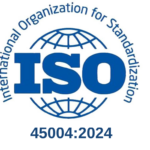With the release of ISO 9001:2015 in September 2015 many organisations are in the process of implementing a transition plan and updating their approach to quality management during this three-year transition period from the old Standard.
A key change in the approach required by the new standard, one of the areas of greatest challenge in making the transition, is found in element 5 of the standard: Leadership.
The 2008 version of the standard required commitment to quality management from senior executive levels of the organisation. However, it also allowed for the appointment of a Quality Management Representative to whom responsibility for the management of quality in general, and the running of the quality management system (QMS) in particular, could be assigned.
In contrast, the new standard assigns the role of management representative to the top management of the organisation, and does not require a person to be specifically assigned as a Management Representative. This difference confers a level of responsibility for and understanding of quality management onto senior executive personnel and this responsibility can no longer be transferred to other positions in the organisation.
Element 5 of the standard refers to 10 key areas in which commitment can be demonstrated by management:
- Taking accountability for the overall effectiveness of the quality management system;
- Ensuring that the quality policy and quality objectives are developed in line with the organisation’s requirements;
- Integrating quality into the way the business functions;
- Using the process approach and introducing risk-based thinking (refer Insight issue 53);
- Providing resources needed for the QMS;
- Communicating quality requirements and the importance thereof;
- Ensuring that the QMS achieves its intended results;
- Ensuring that appropriate human resources are engaged to support and implement the QMS;
- Encouraging improvement; and
- Supporting other applicable management roles to demonstrate leadership.
Whilst there will always be role for a Quality Manager, it is now clear that responsibility for quality is apportioned across the leadership of a business, rather than being placed primarily with one specific person or role.
Please contact QRMC if your management team would like assistance.











